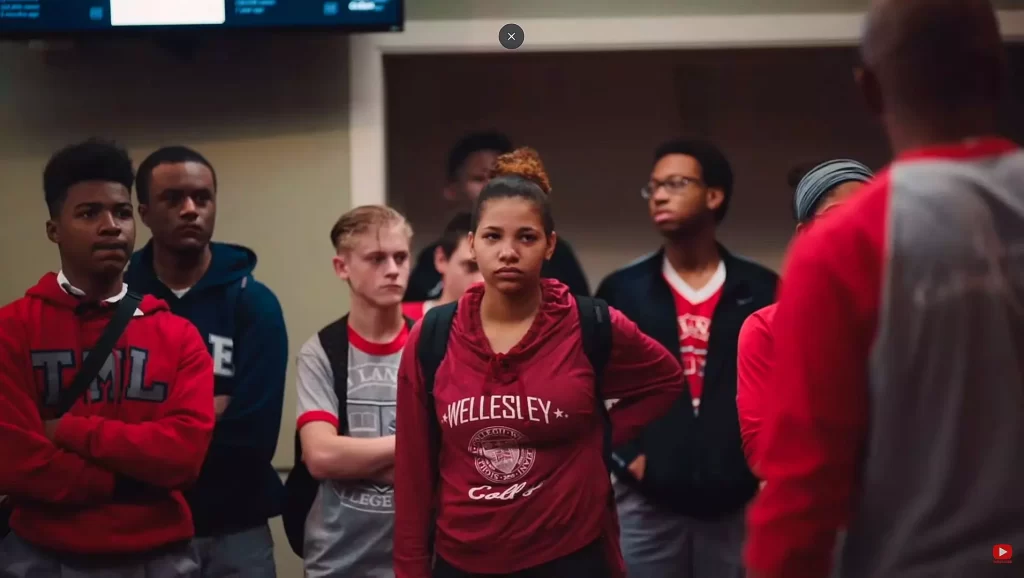The T.M. Landry College Preparatory School gained national attention for its impressive college acceptance rates and commitment to educating black and brown children from impoverished backgrounds. However, the school faced accusations of abuse and fabrication of transcripts and college applications, which were brought to light by an investigative report by The New York Times. This paper aims to examine the potential harm caused by The New York Times’ actions and the underlying motives behind their reporting. Additionally, a comparison will be made with the college admissions scandal involving wealthy white parents to highlight the bias and racism that may have influenced The New York Times’ approach.
The reporting by The New York Times on allegations against T.M. Landry College Preparatory School has had profound and far-reaching effects. Nearly every school in America faces challenges in various areas as educators do their best to serve the needs of their students. However mere accusations do not necessarily substantiate an investigatory process, especially one that destroys lives and potential of students who are already at a clear disadvantage.
The Impact of The New York Times’ Reporting
The allegations made against T.M. Landry were serious and damaging. They included falsification of transcripts and claims of abusive practices within the school’s walls. These accusations not only tarnished the reputation of the institution but also cast a shadow over the achievements of its students, who had been celebrated for their impressive college acceptance rates despite coming from disadvantaged backgrounds.
The implications of The New York Times’ story extended beyond the school’s administration and staff; they had a significant impact on the students, their families, and the broader community. The allegations caused emotional distress and potentially jeopardized the students’ future prospects. Families were left grappling with the harsh reality that the institution they had entrusted with their children’s education was allegedly engaged in unethical practices, if proven true.
The reporting by The New York Times raised several ethical questions. The decision to publish the story without concrete evidence and without considering its potential repercussions could be perceived as reckless. It is crucial to ask whether the news outlet demonstrated due diligence and sensitivity towards the students and their families. Did they consider the potential harm their reporting could cause to already marginalized communities? These are important issues that merit further exploration.
The reporting by The New York Times had a significant impact on T.M. Landry College Preparatory School, its students, and their families. The allegations, if true, are indeed severe. However, the manner in which the story was presented and the potential harm it may have caused to innocent parties brings into question the ethics and motivations behind the news outlet’s approach.
Motive Analysis: Examining The New York Times’ Intentions
One must consider what the motive of the New York Times was in running this story. Who did it benefit? Did it save the ivy league school from admitting students who were less-than the institution’s long-standing reputations? Did it drain school districts of much-needed finances, far too often misappropriated? Or was it an attempt to push the envelope further to help prevent children of color from achieving their dreams of economic freedom and advancement? Or are there many possible motives the New York Times could have had in so aggressively wanting to publish this story in particular?
One possible motive that could be considered is the preservation of the existing system of white supremacy. By casting doubt on the achievements of black and brown students and their acceptance into Ivy League colleges, the narrative may serve to uphold racial hierarchies and limit opportunities for these marginalized groups. This perspective warrants thorough exploration to understand whether it influenced The New York Times’ approach to the story.
Another aspect of the analysis involves examining the role of The New York Times in targeting Michael and Tracey Landry, the founders of T.M. Landry. Was their reporting an objective investigation or a targeted attack? The extent to which the Landrys were vilified and the potential repercussions on their lives and reputations should be considered.
Lastly, the connection between The New York Times’ reporting and the perpetuation of institutional racism, particularly within the education system, should be discussed. The allegations against T.M. Landry, if viewed through the lens of deep-rooted discrimination and pervasive bias, could be seen as part of a broader pattern where institutions serving marginalized communities are held to different standards and scrutinized more intensely.
Examining The New York Times’ motives provides valuable insights into the potential bias and embedded inequality that may have influenced their reporting on T.M. Landry. Whether preserving white supremacy, targeting the Landrys, or perpetuating institutional racism, these potential motivations raise critical questions about the role of media in shaping public perception and reinforcing societal inequities.
Comparison to the College Admissions Scandal
When looking at the choice of the New York Times in exposing an unsubstatitated claim against the T.M. Landry school, we must look at a long history of the wealthy, particularly Caucasian wealthy parents who have committed far more egregious acts to gain their children entrance into the nation’s top colleges and universities, all of whom were unqualified. Consider the stories of Felicity Huffman and Lori Loughlin. The college admissions scandal saw wealthy white parents, including celebrities like Felicity Huffman and Lori Loughlin, fraudulently securing their children’s admission into elite colleges. Despite the severity of their actions, they received relatively lenient sentences, with Huffman serving only 11 days of her 14-day sentence and Loughlin receiving a two-month sentence.
Contrast this to the fallout faced by the students and families of T.M. Landry, who were subjected to a public trial by media, their futures potentially jeopardized by allegations of transcript falsification and abusive practices at the school.
This stark contrast brings to light the ongoing racism that permeates our education system. Wealthy white parents were able to manipulate the system to their advantage with minimal consequences, while black and brown students striving for educational success through legitimate means are scrutinized and penalized for minor discrepancies on their applications. This comparison underscores the racial disparities in how these cases were handled, revealing the biased structures that perpetuate inequality in educational opportunities.
The comparison between the T.M. Landry case and the college admissions scandal exposes the institutionalized prejudice inherent in our education system. It highlights the need for a more equitable approach that does not disproportionately penalize marginalized communities while allowing privileged individuals to evade accountability.
When Reporting Becomes Harmful: The Unforeseen Impact on T.M. Landry Students
In analyzing the impact of The New York Times’ reporting on T.M. Landry College Preparatory School, it becomes clear that the potential harm inflicted on the students and families far outweighs any journalistic value the story may have had. These were children and families who saw the school as a harbinger of promise, a pathway to a better future through education. However, the newspaper’s story undermined this hope, casting a shadow of doubt and ignominy over their achievements.
The motives behind the reporting are also questionable. The actions of The New York Times, whether intentional or not, appear to perpetuate the legacy of structural biases and possibly serve to uphold an existing system of white supremacy. Rather than being an impartial observer and reporter of facts, the newspaper may have inadvertently become an agent of systemic prejudice, reinforcing negative stereotypes and widening the gap of inequality.
The stark contrast between the T.M. Landry case and the college admissions scandal involving wealthy white parents further underscores the systemic bias in our education system. While privileged individuals manipulated the system with minimal consequences, marginalized students striving for success were scrutinized and penalized. This disparity is a stark reminder of the structural injustices that continue to plague our society.
While The New York Times has a duty to report on matters of public interest, it also has a responsibility to do so with discretion and sensitivity. In the case of T.M. Landry College Preparatory School, the newspaper seems to have prioritized sensationalism over the well-being of the students and families. The story serves as a cautionary tale of how journalism, when not exercised with care and consideration, can cause harm and perpetuate harmful societal biases. As we move towards a more equitable future, it is crucial that media outlets like The New York Times reflect on their role and strive to report responsibly, always keeping in mind the potential impact of their stories on the most vulnerable among us.
Dr. Aaron Lewis, December 18, 2023
References:
- Caulfield, Philip. “Elite-College Admissions Were Built to Protect Privilege. Here’s How They Can Change.” The New York Times, 2 June 2019, www.nytimes.com/2019/06/02/us/politics/tm-landry-fbi-college-admissions.html.
- Johnson, Darran. ” Inside T.M. Landry: A School in Louisiana Where Students Succeed and So Do the Staffs.” The New York Times, 31 May 2019, www.nytimes.com/2019/05/31/the-weekly/tm-landry-school-scandal-louisiana.html.
- Kanno-Youngs, Zolan. “F.B.I. Investigates Abuse and Fraud Claims at School That Trump Praised.” The New York Times, 12 Dec. 2018, www.nytimes.com/2018/12/12/us/politics/tm-landry-college-prep-investigation.html.
- LaForgia, Michael. “At a Louisiana School, ‘Paint and Spackle’ Hid Signs of Trouble.” The New York Times, 8 Dec. 2018, www.nytimes.com/2018/12/08/opinion/sunday/tm-landry-louisiana-school-abuse.html.
- LaForgia, Michael. “Racial Bias Test Divides a School Once Called ‘The Harvard of the Poor.’” The New York Times, 30 Nov. 2018, www.nytimes.com/2018/11/30/us/tm-landry-college-prep-black-students.html.

